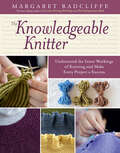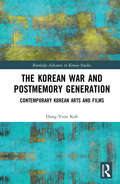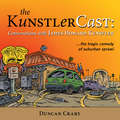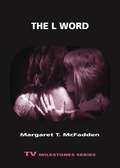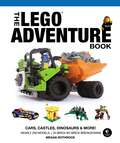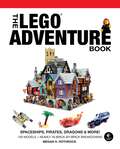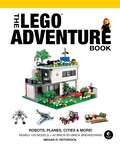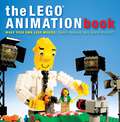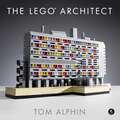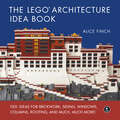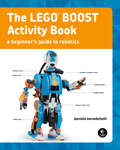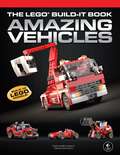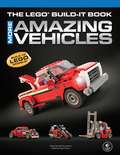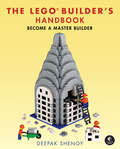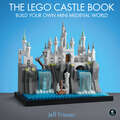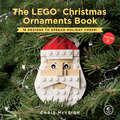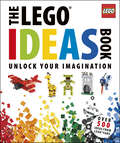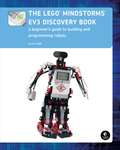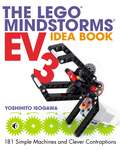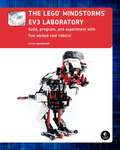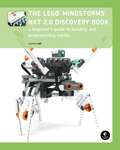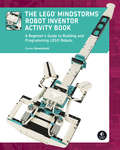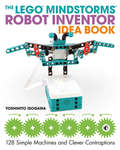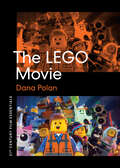- Table View
- List View
The Knowledgeable Knitter: Understand the Inner Workings of Knitting and Make Every Project a Success
by Margaret RadcliffeKnitting is a combination of skill, determination, and adaptability. Whether you’re looking for a suitable substitute yarn, trying to modify a pattern, or fixing a mistake, Margaret Radcliffe offers proven advice that will help you solve all of your knitting quandaries. With this definitive guide, you’ll not only learn how to adjust armholes and shape collars, but why certain techniques work best in different situations. Radcliffe gives you the confidence and inspiration that will help you become a better, happier, and more confident knitter.
The Korean War and Postmemory Generation: Contemporary Korean Arts and Films (Routledge Advances in Korean Studies)
by Dong-Yeon KohThis pioneering volume navigates cultural memory of the Korean War through the lens of contemporary arts and film in South Korea for the last two decades. Cultural memory of the Korean War has been a subject of persistent controversy in the forging of South Korean postwar national and ideological identity. Applying the theoretical notion of “postmemory,” this book examines the increasingly diversified attitudes toward memories of the Korean War and Cold War from the late 1990s and onward, particularly in the demise of military dictatorships. Chapters consider efforts from younger generation artists and filmmakers to develop new ways of representing traumatic memories by refusing to confine themselves to the tragic experiences of survivors and victims. Extensively illustrated, this is one of the first volumes in English to provide an in-depth analysis of work oriented around such themes from 12 renowned and provocative South Korean artists and filmmakers. This includes documentary photographs, participatory public arts, independent women’s documentary films, and media installations. The Korean War and Postmemory Generation will appeal to students and scholars of film studies, contemporary art, and Korean history.
The KunstlerCast: Conversations with James Howard Kunstler
by Duncan CraryBased off the popular podcast, this book collects one man’s conversations with an outspoken social critic on the negative effects of the suburbs.James Howard Kunstler has been described as “one of the most outrageous commentators on the American built environment.” An outspoken critic of suburban sprawl, Kunstler is often controversial and always provocative. The KunstlerCast is based on the popular weekly podcast of the same name, which features Kunstler in dialogue with author Duncan Crary, offering a personal window into Kunstler’s worldview.Presented as a long-form conversational interview, The KunstlerCast revisits and updates all the major ideas contained in Kunstler’s body of work, including:The need to rethink current sources of transportation and energyThe failure of urban planning, architecture and industrial societyAmerica’s plastic, dysfunctional cultureThe reality of peak oilWhether sitting in the studio, strolling city streets, visiting a suburban mall or even “Happy Motoring,” the grim predictions Kunstler makes about America’s prospects are leavened by his signature sharp wit and humor. This book is rounded out by commentary, footnotes and supplemental vignettes told from the perspective of an “embedded” reporter on the Kunstler beat.Readers may or may not agree with the more dystopian of Kunstler’s visions. Regardless, The KunstlerCast is bound to inspire a great deal of thought, laughter, and hopefully, action.Praise for The KunstlerCast“A bracing dose of reality for an unreal world.” —Stephen J. Dubner, co-author of Freakonomics and SuperFreakonomics“Erudite, eloquent . . . with good humor about the hilariously grotesque North American nightmare of car-addicted suburban sprawl.” —Dmitry Orlov, author of Reinventing Collapse“Prepare to be enlightened, infuriated and amused.” —Gregory Greene, Director, The End of Suburbia“So enlightening yet casual that the reader feels like they’re eavesdropping into the den of Kunstler’s prodigious mind.” —Andrew D. Blechman, author of Leisureville
The L Word
by Margaret T. McfaddenIn January 2004, Showtime debuted The L Word, the first prime-time commercial drama to center around lesbian characters. Over the course of six seasons, the show depicted the lives and loves of an evolving circle of friends in West Hollywood, California, and was widely read as evidence of changing social attitudes toward gay people. Building on immediate critical attention, the show reigned as Showtime's most popular for its first three seasons and earned a large and enthusiastic audience. In The L Word, author Margaret T. McFadden argues that the show is important for its subject matter, its extended and deeply literate commentary on the history of representation of lesbians in popular media, and the formal innovations it deployed to rewrite that history. McFadden shows that the program's creators, led by executive producer Ilene Chaiken, were well aware of the assumptions and expectations that viewers would bring to it after a history of stereotypical depictions of lesbians on television. They sought to satisfy a diverse group of viewers who wanted honest and appealing portrayals of their lives while still attracting a large enough mainstream audience to make The L Word commercially viable. In five chapters, McFadden explores how the show tackled these problems of representation by using reflexivity as a strategy to make meaning, undertaking a complicitous critique of Hollywood, skillfully using a soap-drama format to draw in its audience, and ultimately creating its own complex representation of a lesbian community. While deconstructing the history of misrepresentation of lesbians, The L Word's new modes of storytelling and new perspectives made many aspects of lesbian experience, history, and culture visible to a large audience. Fans of the show as well as readers interested in cultural studies and gay and lesbian pop cultural history will enjoy this astute volume.
The LEGO Adventure Book, Vol. 1: Cars, Castles, Dinosaurs and More!
by Megan H. RothrockUnleash your imagination as you journey through the wide-ranging world of LEGO building with The LEGO Adventure Book. This inspiring tour is filled with bright visuals, step-by-step breakdowns of 25 models, and nearly 200 example models from the world's best builders. Learn to build robots, trains, medieval villages, spaceships, airplanes, and much more. Whether you're brand-new to LEGO or have been building for years, this book is sure to spark your imagination and motivate you to keep creating!
The LEGO Adventure Book, Vol. 2: Spaceships, Pirates, Dragons & More!
by Megan H. RothrockJoin Megs and Brickbot on another exciting tour of LEGO building in this second volume of The LEGO Adventure Book series. As they track the Destructor and rebuild the models he destroys, you&’ll follow along and meet some of the world&’s best builders. Learn to create sleek spaceships, exotic pirate hideaways, fire-breathing dragons, fast cars, and much more. With nearly 40 step-by-step breakdowns and 100 example models, The LEGO Adventure Book is sure to spark your imagination and keep you building!
The LEGO Adventure Book, Vol. 3: Robots, Planes, Cities & More!
by Megan H. RothrockIn this volume of the LEGO Adventure Book series, Megs and Brickbot face their toughest challenge yet. The Destructor is on the loose again, demolishing LEGO models and shaking things up! Join Megs as she rebuilds the models and meets some of the world’s best builders. Learn to create a Renaissance house, a classic movie theater, sushi, Miniland-scale marvels, an ice cream truck, street lamps, and even a chicken coop. With 40 step-by-step breakdowns and nearly 150 example models, The LEGO Adventure Book will surely inspire you and keep you building!
The LEGO Animation Book: Make Your Own LEGO Movies!
by David Pagano David PickettHave you ever wondered what your LEGO creations would look like on the big screen? The LEGO Animation Book will show you how to bring your models to life with stop-motion animation—no experience required! Follow step-by-step instructions to make your first animation, and then explore the entire filmmaking process, from storyboards to post-production.Along the way, you’ll learn how to:–Create special effects like explosions and flying minifigures–Convey action and emotion with your minifigure actors–Design sets for animation—make three buildings look like an entire city!–Light, frame, and capture consistent photos–Add detail and scope to your films by building in different scales–Build camera dollies and rigs out of LEGO bricks–Choose cameras, software, and other essential animation toolsDive into the world of animation and discover a whole new way to play!For ages 10+
The LEGO Architect
by Tom AlphinTravel through the history of architecture in The LEGO Architect. You’ll learn about styles like Art Deco, Modernism, and High-Tech, and find inspiration in galleries of LEGO models. Then take your turn building 12 models in a variety of styles. Snap together some bricks and learn architecture the fun way!
The LEGO Architecture Idea Book: 1001 Ideas for Brickwork, Siding, Windows, Columns, Roofing, and Much, Much More
by Alice FinchTake your creations to the next level with The LEGO Architecture Idea Book! These clever building tips will give you endless inspiration for making your own amazing mansions, castles, houses, spooky shacks, and more.Every chapter includes ideas for creating architectural elements like columns, doors, windows, and walls. But rather than providing step-by-step instructions, the book includes helpful photography from every angle that shows you how to achieve the look, adapt it to your build, and make it your own. Learn how to:- Build amazing walls that break the mold, with brick-and-mortar effects, weathered walls, and loose bricks - Recreate structural effects like timber framing, soaring towers and turrets, shingled roofs,clapboard siding, and more - Elevate your models with &“stained glass&”, intricate color patterns, and tumble-down wear-and-tear - Use pieces like croissants, snakes, and goblets to make unique architectural ornamentation Bursting with clever ideas, The LEGO Architecture Idea Book will show you how to turn your buildings into impressive, realistic structures.
The LEGO BOOST Activity Book
by Daniele BenedettelliAt last, fans of the LEGO BOOST robot building kit have the learning resource they've been missing! Enter The LEGO BOOST Activity Book: a full-color guide that will help readers learn how to build and code LEGO creations that move, explore their environment, grab and lift objects, and more.The LEGO BOOST kit lets younger builders create fun, multifunctional robots by combining bricks with code, but it doesn't come with a manual. With the help of this complete guide to the LEGO BOOST set, you'll be on your way to building and programming BOOST robots in no time.You'll begin your exploration by building a basic rover robot called MARIO to help you learn the fundamentals of the BOOST programming environment. Next, you'll add features to your rover to control its movement and make it repeat actions and react to colors and sounds. Once you've learned some programming basics, you'll learn how to program your robot to do things like follow lines on the ground, scan its environment to decide where to go, and even play darts. As final projects, you'll create two complete robots: BrickPecker to help you organize your bricks and CYBOT, a robot that talks, shoots objects, and executes voice commands. As you advance through the book, optional lessons aim to deepen your understanding of basic robotics concepts. Brain BOOSter sections let you dig into the math and engineering behind your builds while a host of experiments seek to test your skills and encourage you to do more with your robots. With countless illustrations, extensive explanations, and a wealth of coding examples to guide you, The LEGO BOOST Activity Book is sure to take you from beginning builder to robotics whiz and give your robot-building brain that needed boost!
The LEGO Build-It Book, Vol. 1: Amazing Vehicles
by Mattia Zamboni Nathanael KuipersWith just one collection of LEGO bricks, you can build any of these 10 models—from the simple Go-Kart to the intricate Rescue Truck.Handy tips and advanced building techniques will inspire you to create your own amazing models for even more fun!–Off-Roader–Go-Kart–Muscle Car–Stroller–Multi-Purpose Truck–Historic Racer–Classic Car–Wheel Loader–Street Rod–Rescue Truck
The LEGO Build-It Book: More Amazing Vehicles
by Mattia Zamboni Nathanael KuipersWith just one collection of LEGO bricks, you can build any of these 10 models—from the simple Hot Rod to the mighty Excavator. Tips and tricks will inspire you to create your own amazing models. Whether you’re new to the LEGO Build-It Book series or ready for a new challenge, you’re in for hours of fun! <br>–Hot Rod <br>–Forklift <br>–Wrecker <br>–Roadster <br>–Gran Turismo <br>–Dune Buggy <br>–Chopper <br>–Big Rig <br>–F1 Racer–Excavator
The LEGO Builder's Handbook: Become a Master Builder
by Deepak ShenoyForget step-by-step instructions — you&’re ready to design your own LEGO creations! The LEGO Builder&’s Handbook is the only guide you need for building totally out-of-this-world, wholly original models.What&’s the right scale to use for your LEGO model? How does SNOT, also known as sideways building, work? What&’s the trick to achieving smoother tapers? How do you design a LEGO sculpture? Find the answers to these questions and more in The LEGO Builder&’s Handbook. Unlock the secrets to advanced building techniques and take your creations to the next level.In this comprehensive, modern introduction to LEGO building, you&’ll learn how to:Build models that won&’t fall apart using masonry-inspired techniquesChoose the right pieces while mastering LEGO measurement units and the geometry of basic elementsBuild using a variety of scales to create realistic replicas of real-world structuresCreate LEGO mosaics, curved shapes, and 3D sculptures using software like BrickLink Studio, LEGO Art Remix, and LSculptFull-color and packed with detailed illustrations, this book will also show you how to:Apply half-stud offsets using jumper plates to add subtle textures and realistic details to your modelsUse SNOT (studs not on top) techniques to build sideways, creating shapes and details impossible with simple stackingBuild angled walls, cylinders, domes, and spheres using advanced techniques like brick bending, hinged polygons, and Lowell spheresUnlock the secrets of the master builders with The LEGO Builder&’s Handbook. Whether you&’re a beginner or a seasoned builder, you&’ll learn to push the boundaries of your creativity and build your own models, brick by brick.
The LEGO Castle Book: Build Your Own Mini Medieval World
by Jeff FriesenFilled with stunning photos, step-by-step instructions, and creative ideas for customization—The LEGO Castle Book shows you how to build six mini castles complete with moats, drawbridges, gatehouses, and more! Travel through the history of castle architecture and learn how to build basic castle components like walls, towers, gates, and keeps.Whether your goal is to add realistic details like crenellations, turrets, and parapets to your designs or to create a believable medieval setting, you&’ll find endless inspiration in The LEGO Castle Book.Includes complete parts list and building instructions for 6 castles: • Sleeping Dragon • Land&’s End • River Gate • Winter Palace • Eight Arches • Mountain Kingdom
The LEGO Christmas Ornaments Book, Volume 2: 16 Designs to Spread Holiday Cheer!
by Chris McveighBuilding instructions for 16 clever Christmas ornaments that can be built from standard LEGO parts that fans are likely to have in their collection. These small and uncomplicated ornaments are quick to build and a joy to display.You can build 16 classic Christmas designs including a gingerbread house, Santa, reindeer, a snowman, a wreath, a poinsettia, and traditional shapes like baubles and modern geometric swirls. With easy-to-follow instructions and stunning full color photography, The LEGO Christmas Ornaments Book, Volume 2 will help you spread some holiday cheer with LEGO in no time!
The LEGO Christmas Ornaments Book: 15 Designs to Spread Holiday Cheer
by Chris McveighThis Christmas, LEGO is moving from under the tree to on the tree! With The LEGO Christmas Ornaments Book as your guide, you’ll make classic globe and barrel ornaments, all out of LEGO, as well as original gingerbread houses, a charming wreath, arcade cabinets, and many more.Packed with step-by-step instructions for 15 charming builds, The LEGO Christmas Ornaments Book is the perfect family activity this holiday season.
The LEGO Ideas Book: Unlock Your Imagination
by Daniel LipkowitzOver 2 million copies sold worldwide! Be inspired to create and build amazing models with your LEGO® bricks! The LEGO Ideas Book is packed full of tips from expert LEGO builders on how to make jet planes reach new heights, create fantastic fortresses, swing through lush jungles, have fun on the farm and send space shuttles out of this world! This awesome ideas book is divided into six themed chapters - transport, buildings, space, kingdoms, adventure, and useful makes - to inspire every member of the family to get building. With over 500 models and ideas, this book is perfect for any LEGO fan - young or young at heart - who want to make their models cool, fun and imaginative. ©2020 The LEGO Group.
The LEGO MINDSTORMS EV3 Discovery Book: A Beginner's Guide to Building and Programming Robots
by Laurens ValkLEGO MINDSTORMS has changed the way we think about robotics by making it possible for anyone to build real, working robots. The latest MINDSTORMS set, EV3, is more powerful than ever, and The LEGO MINDSTORMS EV3 Discovery Book is the complete, beginner-friendly guide you need to get started.Begin with the basics as you build and program a simple robot to experiment with motors, sensors, and EV3 programming. Then you’ll move on to a series of increasingly sophisticated robots that will show you how to work with advanced programming techniques like data wires, variables, and custom-made programming blocks. You’ll also learn essential building techniques like how to use beams, gears, and connector blocks effectively in your own designs.Master the possibilities of the EV3 set as you build and program:–The EXPLOR3R, a wheeled vehicle that uses sensors to navigate around a room and follow lines–The FORMULA EV3 RACE CAR, a streamlined remote-controlled race car–ANTY, a six-legged walking creature that adapts its behavior to its surroundings–SK3TCHBOT, a robot that lets you play games on the EV3 screen–The SNATCH3R, a robotic arm that can autonomously find, grab, lift, and move the infrared beacon–LAVA R3X, a humanoid robot that walks and talksMore than 150 building and programming challenges throughout encourage you to think creatively and apply what you’ve learned to invent your own robots. With The LEGO MINDSTORMS EV3 Discovery Book as your guide, you’ll be building your own out-of-this-world creations in no time!Requirements: One LEGO MINDSTORMS EV3 set (LEGO SET #31313)
The LEGO MINDSTORMS EV3 Idea Book: 181 Simple Machines and Clever Contraptions
by Yoshihito IsogawaThe LEGO® MINDSTORMS® EV3 Idea Book explores dozens of creative ways to build amazing mechanisms with the LEGO MINDSTORMS EV3 set. Each model includes a list of the required parts, minimal text, and colorful photographs from multiple angles so you can re-create it without the need for step-by-step instructions.You’ll learn to build cars with real suspension, steerable crawlers, ball-shooters, grasping robotic arms, and other creative marvels. Each model demonstrates simple mechanical principles that you can use as building blocks for your own creations.Best of all, every part you need to build these machines comes in one LEGO set (#31313)!
The LEGO MINDSTORMS EV3 Laboratory: Build, Program, and Experiment with Five Wicked Cool Robots
by Daniele Benedettelli<P>The LEGO® MINDSTORMS® EV3 set offers so many new and exciting features that it can be hard to know where to begin. Without the help of an expert, it could take months of experimentation to learn how to use the advanced mechanisms and numerous programming features. <P>In The LEGO MINDSTORMS EV3 Laboratory, author Daniele Benedettelli, robotics expert and member of the elite LEGO MINDSTORMS Expert Panel, shows you how to use gears, beams, motors, sensors, and programming blocks to create sophisticated robots that can avoid obstacles, walk on two legs, and even demonstrate autonomous behavior. You’ll also dig into related math, engineering, and robotics concepts that will help you create your own amazing robots. Programming experiments throughout will challenge you, while a series of comics and countless illustrations inform the discussion and keep things fun. <P>As you make your way through the book, you’ll build and program five wicked cool robots: <br>–ROV3R, a vehicle you can modify to do things like follow a line, avoid obstacles, and even clean a room <br>–WATCHGOOZ3, a bipedal robot that can be programmed to patrol a room using only the Brick Program App (no computer required!) <br>–SUP3R CAR, a rear-wheel-drive armored car with an ergonomic two-lever remote control <br>–SENTIN3L, a walking tripod that can record and execute color-coded sequences of commands <br>–T-R3X, a fearsome bipedal robot that will find and chase down prey <P>With The LEGO MINDSTORMS EV3 Laboratory as your guide, you’ll become an EV3 master in no time. <br>Requirements: One LEGO MINDSTORMS EV3 set (LEGO SET #31313)
The LEGO MINDSTORMS NXT 2.0 Discovery Book: A Beginner's Guide to Building and Programming Robots
by Laurens ValkDiscover the many features of the LEGO® MINDSTORMS® NXT 2.0 set. The LEGO MINDSTORMS NXT 2.0 Discovery Book is the complete, illustrated, beginner's guide to MINDSTORMS that you've been looking for.The crystal clear instructions in the Discovery Book will show you how to harness the capabilities of the NXT 2.0 set to build and program your own robots. Author and robotics instructor Laurens Valk walks you through the set, showing you how to use its various pieces, and how to use the NXT software to program robots. Interactive tutorials make it easy for you to reach an advanced level of programming as you learn to build robots that move, monitor sensors, and use advanced programming techniques like data wires and variables. You'll build eight increasingly sophisticated robots like the Strider (a six-legged walking creature), the CCC (a climbing vehicle), the Hybrid Brick Sorter (a robot that sorts by color and size), and the Snatcher (an autonomous robotic arm). Numerous building and programming challenges throughout encourage you to think creatively and to apply what you've learned as you develop the skills essential to creating your own robots.Requirements: One LEGO MINDSTORMS NXT 2.0 set (#8547)Features:–A complete introduction to LEGO MINDSTORMS NXT 2.0–Building and programming instructions for eight innovative robots–50 sample programs and 72 programming challenges (ranging from easy to hard) encourage you to explore newly learned programming techniques–15 building challenges expand on the robot designs and help you develop ideas for new robotsWho is this book for?This is a perfect introduction for those new to building and programming with the LEGO MINDSTORMS NXT 2.0 set. The book also includes intriguing robot designs and useful programming tips for more seasoned MINDSTORMS builders.
The LEGO MINDSTORMS Robot Inventor Activity Book: A Beginner's Guide to Building and Programming LEGO Robots
by Daniele BenedettelliAn introduction to the LEGO Mindstorms Robot Inventor Kit through seven engaging projects.With its amazing assortment of bricks, motors, and smart sensors, the LEGO® MINDSTORMS® Robot Inventor set opens the door to a physical-meets-digital world. The LEGO MINDSTORMS Robot Inventor Activity Book expands that world into an entire universe of incredibly fun, uniquely interactive robotic creations! Using the Robot Inventor set and a device that can run the companion app, you&’ll learn how to build bots beyond your imagination—from a magical monster that gobbles up paper and answers written questions, to a remote-controlled transformer car that you can drive, steer, and shape-shift into a walking humanoid robot at the press of a button.Author and MINDSTORMS master Daniele Benedettelli, a robotics expert, takes a project-based approach as he leads you through an increasingly sophisticated collection of his most captivating robot models, chapter by chapter. Each project features illustrated step-by-step building instructions, as well as detailed explanations on programming your robots through the MINDSTORMS App—no coding experience required.As you build and program an adorable pet turtle, an electric guitar that lets you shred out solos, a fully functional, whiz-bang pinball machine and more, you&’ll discover dozens of cool building and programming techniques to apply to your own LEGO creations, from working with gears and motors, to smoothing out sensor measurement errors, storing data in variables and lists, and beyond. By the end of this book, you&’ll have all the tools, talent and inspiration you need to invent your own LEGO MINDSTORMS robots.
The LEGO MINDSTORMS Robot Inventor Idea Book
by Yoshihito IsogawaA follow-up to the best-selling LEGO® Technic Idea Book series by master builder and LEGO luminary Yoshihito Isogawa, readers learn to create their own robots from the LEGO MINDSTORMS Robot Inventor Set.If you&’ve had your fun building programmable, intelligent creations with the LEGO® MINDSTORMS® Robot Inventor set, it&’s time to take your bot-building to the next level! With over 125 new models, the LEGO MINDSTORMS Robot Inventor Idea Book will unleash your imagination and open up limitless possibilities for unique robotic designs.You&’ll learn how to build basic mechanisms with motors and sensors, robots that can walk or drive themselves, and practical tools for lifting, opening doors, drawing, and even launching projectiles. Then, bring them all to life with the LEGO MINDSTORMS Robot Inventor App, which lets you program your bots to perform tasks and missions.Each model is paired with an illustrated list of parts and multi-angled color photographs, so you can easily reproduce the projects without the need for step-by-step instructions. Best of all, you&’ll also be inspired to combine various mechanisms into your own interactive inventions, toys, cars, games, and more!To build the book&’s models, all you need is the LEGO® MINDSTORMS® Robot Inventor set (#51515) and a smart device that can run the MINDSTORMS App.
The LEGO Movie (21st Century Film Essentials)
by Dana PolanWhat happens when we set out to understand LEGO not just as a physical object but as an idea, an icon of modernity, an image—maybe even a moving image? To what extent can the LEGO brick fit into the multimedia landscape of popular culture, especially film culture, today? Launching from these questions, Dana Polan traces LEGO from thing to film and asserts that The LEGO Movie is an exemplar of key directions in mainstream cinema, combining the visceral impact of effects and spectacle with ironic self-awareness and savvy critique of mass culture as it reaches for new heights of creativity. Incorporating insights from conversations with producer Dan Lin and writer-directors Phil Lord and Chris Miller, Polan examines the production and reception of The LEGO Movie and closely analyzes the film within popular culture at large and in relation to LEGO as a toy and commodity. He identifies the film&’s particular stylistic and narrative qualities, its grasp of and response to the culture industry, and what makes it a distinctive work of animation within the seeming omnipresence of animation in Hollywood, and reveals why the blockbuster film, in all its silliness and seriousness, stands apart as a divergent cultural work.
